future cities of the world
land, sea or space...
For years, man has looked to the stars to try and relocate the human race. The Moon and Mars have been spoken about as future destinations, but could we actually colonise another planet if the Earth becomes unsustainable due to the current climate changing?
The way that technology and engineering has advanced over the years, it’s something that we cannot dismiss for the distant future generations of the planet. But the distant future is just that, a distant future. What about the here and now?
Many engineering and architectural companies have been looking at ways to create a better environment for the people in today's climate. With the population of the World’s cities growing at an alarming rate, outdoor space and living accommodation is now seen as a premium, something that was brought to the forefront of the masses during the recent global Covid pandemic.
 Architects have been designing concepts to accommodate people in lesser spaces for years, especially in major cities where the populations are growing at a faster pace: more people means more demand for living quarters and the space to grow food to feed them all. Look at the population growth in places like Tokyo, Bombay, Beijing and New Delhi for example, and you will see the ever-growing problem.
Architects have been designing concepts to accommodate people in lesser spaces for years, especially in major cities where the populations are growing at a faster pace: more people means more demand for living quarters and the space to grow food to feed them all. Look at the population growth in places like Tokyo, Bombay, Beijing and New Delhi for example, and you will see the ever-growing problem.
Even in the UK, local councils are under tremendous strain from the government to build affordable houses for the ever-increasing population. The World Health Organisation have stated that the human race has escalated way beyond control and sustainability, stating that for the first 1800 years of human occupation, there was somewhere around 1 billion people on the planet. By 2084 it is estimated to grow to 9.84 billion. Do the maths, it's quite frightening to think how many people will eventually be on the Earth.


Tackling the situation is something that architects and engineers have been looking at for quite a while, and have gone through different stages, building high rise, low rise, underground, compact, concepts and now water, either on top or underneath the waves.
Regarding the water theory, there are specialist holiday companies that offer underwater rooms, where the guests can come face to face with the marine life.
Although these places are seen as luxury vacation accommodation, what about the day-to-day living? Could there be a demand for living on or under the water permanently?
Joint company venture between Luca Curd Architects and UK based Tim Fu Designs have designed an eco-friendly village that adapts to future living and climate demands. Called the Floating City, it is designed to support global climate change and the ever-increasing problem of finding space for people to inhabit.
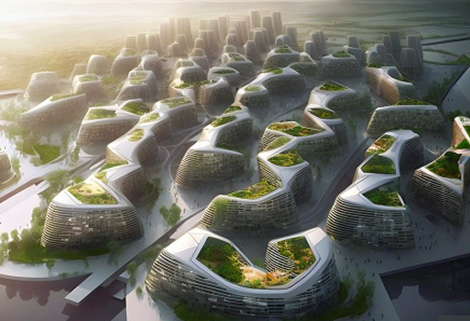

The new city is made up of smooth white structures that are interconnected by a circular appeasing street grid, which gives it a modern feel.
The aesthetics of the village are enhanced with the greenery from the urban forest, bringing the white buildings to life by projecting the green against the white buildings.
The city is built over 25 acres of interconnected platforms and various neighbourhoods, providing accommodation for 50,000 people.
Each section will contain a mixture of high and low rise buildings, surrounded by a membrane of photovoltaic glass, which supplies the whole structure with an energy independent system.
One of the biggest phases, is the sub zero waste project which runs a 100% green system, including a water desalination renewable energy system, along with a farming and energy storage facility.
A spokesman for the architects said, "The city allows its residents to get into a healthier lifestyle, working alongside natural elements".
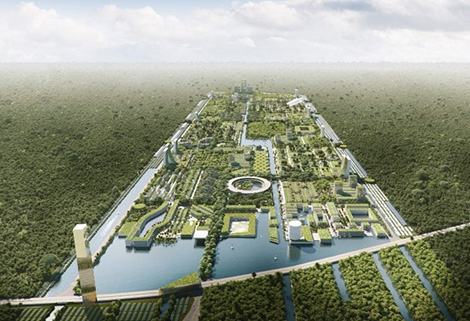
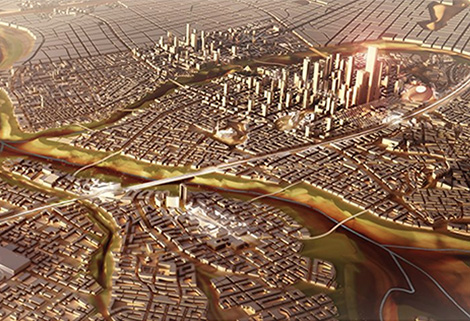
The city is also being planned as a tourist attraction with areas set aside for hotels, fitness centres, shopping malls and leisure facilities, all accessed by sea or air. The structure is designed to support the global response to climate change, and could shape the way our future living accommodation will be.
The project will be presented for the first time during this year's International Architecture Exhibition, the Biennde Architettura.
Because of the need for future space and accommodation, engineering and technology will have to come up and develop future designs that fit the needs of the people and the planet. W>e at Bearingtech recognise the situations that will undoubtedly arise and have decided to take a look at the inventive cities, towns and villages that have changed the way people live.
From an early age, people have strived to live in bigger and better dwellings, starting from the earliest cavemen to the present day inhabitants, something that will continue all the time human beings inhabit the earth.
Some of the structures and layouts that we now live with, were at one point were seen as futuristic buildings. Developments like the Pyramids, Notre Dame, Empire State and the Taj Mahal have all withstood the test of time. Now new and exciting city projects are either under construction or at the drawing board stage, each offering a different style and design. Many are edging towards the green ecosystem, especially the Smart Forest in Mexico and the Chendgu City in China.
Like most countries, they will need to adapt to their surroundings and the people who inhabit the areas will need to be consulted as to which developments will be beneficial before building can be undertaken. It's not viable to build something that is not in the interest of its people; too many cities and towns have been built over the years without the people being consulted, and it's now time to start listening instead of placing all the emphasis on profit.
According to a recent survey and projection census, there are 10 principles that could develop and sustain future cities including….
Ecology: The city of the future will be developed around natural features, to protect the wildlife habitat and floral greenery; the city will be designed to be compact and dense to enhance the impact on the ecosystem and climate control.
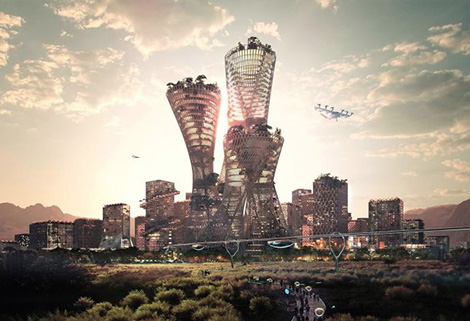
Water: Will be seen as a vital commodity in the city of the future, especially rain storm- water, which will be collected and cleansed to improve the quality.
By using wetland restoration and sponge cities, that will revive and encourage wildlife habitats and protect against flooding and prevent sea levels from rising; wastewater will be treated for irrigation and human consumption.
Energy: According to data, the future city will be 100% renewable, producing enough power within or close to the buildings to be self sufficient, area buildings will share energy, generating as much energy as they consume.
Waste: General waste will become a resource to produce energy or alternative material`s, abandoned industrial sites and old landfill areas will gradually be converted for other purposes after soil remediation.
Food: In the coming decades, food production and sustainability will be the focus of development, concentrating on how food is produced will be vital if the climate change continues at the current rate, underground farming will become a necessity combating the weather conditions on the surface, packaging will also come under scrutiny, eventually outlawing the use of plastics, with the possibility of returning to paper carriers as an alternative.
Because the human population is set to rise to 9.8 billion by 2084, something has to be done; food sustainability will be a major issue, the more people on the planet, the more food and products will be needed to feed them.
Global standards will be established for organic farming and animal treatment, most produce will be grown and produced locally, cutting down the transportation costs.
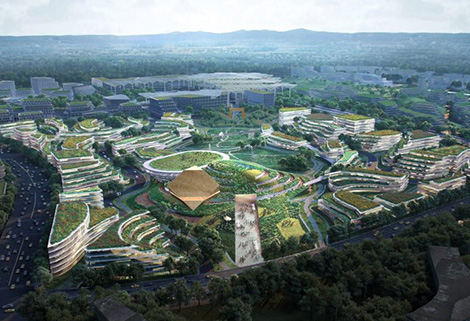

Mobility: Travelling in a futuristic city could become more affordable, safer and more convenient due to the level of automated technology and high speed rail services; hopefully there will be fewer vehicles using the roads giving way to more pedestrians if the infrastructure is correct.
The thought of electric cars sounds like a good idea to improve air quality and lower the emissions produced by fossil fuel vehicles, but, and it’s a big but, the infrastructure MUST be perfect before we all ditch our petrol and diesel cars. The charging facilities have to be more widespread, which will reduce the time in waiting whilst the vehicle is charging. At present it takes around 45 minutes per car to be fully charged. If you pull into a station and there is only one charging point, and you are fourth in line, you are going to be there for quite a while, which is impractical.
In some experiments, the electric car amassed more emissions than the conventional cars.
Another aspect of the electric car is what to do with the discarded batteries as they also give off emissions. On a fossil vehicle there is only one battery, on an electric version there are around twelve.
The biggest stumbling block, apart from the charging and battery problems, is the cost of an electric car. A small hatchback can set you back around £ 26,000, which is out of reach for the normal person on the street, so the costs have to be reduced dramatically to attract more buyers.
Countries like Japan have been experimenting with hydrogen in their vehicles for a few years now. This has been achieved by lining all the fuel tanks with a substance called Kevlar, which keeps the hydrogen from igniting if impacted in a collision.
Glasgow Council also tried and tested hydrogen, when they commissioned 12 waste collection lorries in and around the town centre, which seemed to be a success.
“The greatest threat to human existence is our own lack of ability to control our own growth” - WHO
Culture: As technology and engineering becomes more advanced, recreation, arts, computer entertainment, music and virtual reality will be shared globally, bringing densely diverse populated nations and people together, historical heritage will be preserved and celebrated throughout the world amongst all.
Standard of Living: Because the cities will become more populated, the design for accessibility and safety technology will be paramount as more people converge into urban areas. Hopefully residents will have more streamlined access to nature, services and automated technology.
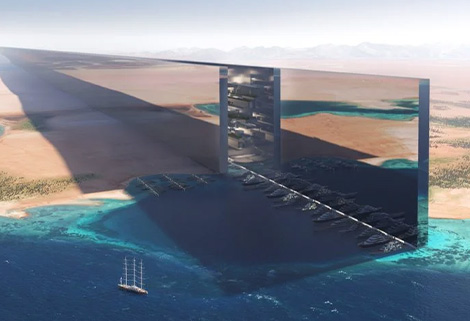
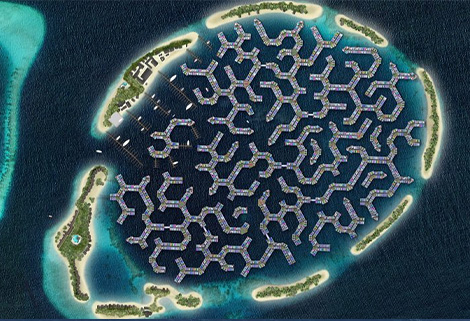
Building and Dwellings: The architectural advancements over the previous years has grown unbelievably, virtually everyday a new material is being used, replacing the more conventional bricks and mortar, take a look at the finished houses on the TV programme Grand Designs and you will see bigger, cleaner, diverse heating systems and glass boxes being built, so much so that the industrial commercial materials are now being used in residential construction, materials like steel is commonplace amongst house builders, albeit making the houses look like libraries, airport lounges or council offices is another matter.
The buildings in the city of the future will not only house residents, but they will pay for themselves by generating heat and storing it, for later use.
The designs will be more directed at pedestrians enjoying leisure time rather than vehicles, giving people more space to enjoy whilst walking.
There is also a delivery design system which is being tested in some buildings, where a drone delivery chute is placed on the top of the roof, with a direct link to the residents abode below, thus stopping deliveries being made at the base of the building, reducing carbon footing, which in todays online shopping trend, will mean less and less delivery vans on the road.
Economy: The economy of the futuristic city must work in tandem with policies that safeguard ecological sustainability; with people adapting to more flexible working hours as artificial intelligence and automation becomes more widespread, meaning more people working from home and the IT industry growing more than ever before.
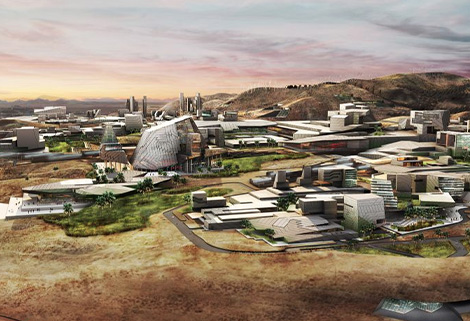
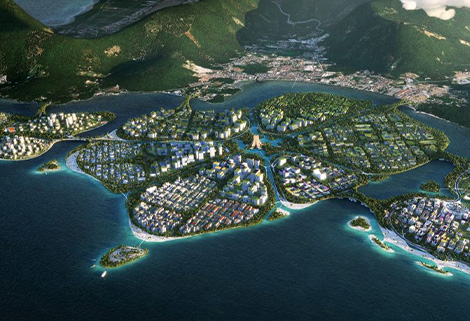
Another area where constructors are looking at, apart from on the water, is to look underneath it, which will ease the pressure on the land above.
There are proposals to build aquatic cities beneath the waves, that could accommodate people into the latter part of the 21st century, designs like the Water Discus Hotel which is a proposed underwater design based in Dubai, UAE. If completed, the structure will be the largest of its type in the world.
Polish company Deep Ocean Technology (DOT), alongside researchers from the Gdansk University, developed the concept of the design, although not a city as such, the experiment could lead to residential accommodation in the future.
In May 2012, Dubai`s world shipbuilding subsidiary, Drydocks World, signed an agreement with the designers to begin construction of the project, however, drawings and plans have been delayed after a major contractor withdrew from the project due to the resignation of their chairman.
DOT, have also started searching for other potential sites across the globe including Oman, Maldives, Australia, Poland, and the Caribbean.
The designs for the Water Discus Hotel consists of two disc shaped structures, one above the surface of the water, with the other underneath, both resemble saucers and are connected together with a large vertical shaft and stairway.
The upper disc will have a usable area of 1,500 square metres, including a multifunctional lobby, and 3 large swimming pools, of which one will be a seawater pool with glass tunnels.
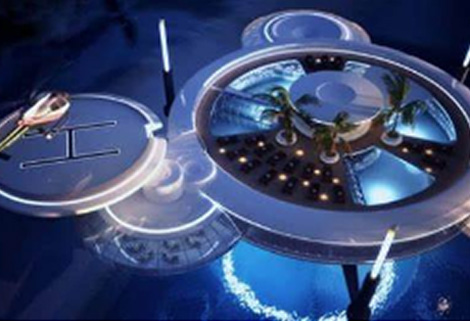
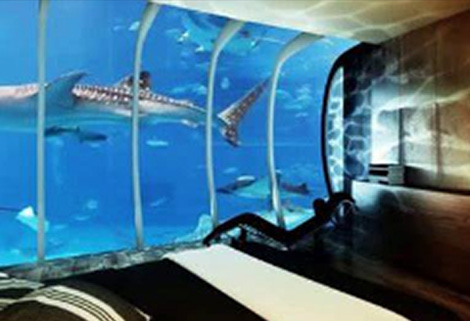
There are also spaces designated for restaurants, gardens, spa`s, and recreational areas.
The submerged disc, which will be underwater to the depth of 10 metre`s, will provide 21 rooms that can accommodate 2 people per room, and offer large windows that provide the guests with views of the underwater world, showing off the coral reef, sea creatures, flora, fauna and marine life that reside in the Persian Gulf.
Each room will be fitted with special lighting for macro photography and an external robot allowing people to interact with the marine life.
Hopefully several individual discs will be added to the original two, to develop an under/ over water hotel complex that will attract people by the millions.
“ Life Beyond the Stars- Science Fiction or soon to be Science Fact?”
Looking beyond our own planet, there are plans for the first astral hotel planned to open its doors to the rich and famous guests for the first time in 2027, named the Voyager Class Space Station, it will accommodate up to 400 paying guests, and will offer all the usual facilities that you would expect from a top class cruise ship, including restaurants, bars, cinemas, gyms, spa`s, libraries as well as live concert venues.
Guests will travel to the luxurious experience on board a rocket transportation system that is operated by the Space X company.
Similar journeys have and are regularly undertaken to and from the International Space Station,
supplying astronauts and supplies to the complex.
To stay at the hotel, paying guests will have to endure a 15-week training programme, and then succumb to 10 days of space conditions, before embarking on their adventure.
Whilst many of the stations 24 modules will be available to the public, others will be leased or sold to private investors or governments, a portion of the stations facilities will be set aside for staff, air, water and power sources.


Further afield, there are talks continuing about the relocation to Mars, which seems far fetched, but the plans are at an advanced stage with designs and drawings already being submitted by various contractors, one of which are the International Architecture Studio, who have released the first images of how the first city structure and human population will look on the red planet, the project is scheduled for construction in 2054.
The plans for Mars being discussed, include the accommodation for 250,000 inhabitants residing there, with designs to cover all aspects of modern living, including purpose built sports and leisure facilities alongside spectacular green domes that will act as parks for residents and will double up as places to grow experimental vegetation, with most of the food coming from the cultivation of crops that will make up the dietary needs.
With sustainability at the heart of the city, the plans show that the buildings will be vertically built instead of horizontally, limiting the effect of atmospheric pressure and radiation, the latter being deadly without the proper shelter.
Considering the hostile reputation that Mars has through Hollywood, this is certainly a different view of what could be an incredible adventure.
Whether this will be achieved in our lifetimes is another matter, but considering how engineering and technology have evolved on Earth, only a fool would have the courage to dismiss it.


Some of these cities sound like the perfect place to reside; the outer space destinations are an unknown quantity yet to be discovered.
If everyone is working less hours, walking more, using less energy with everything hunky dory, one thought that keeps coming to mind, with all these energy saving and less laboured devices being used due to the rise of artificial intelligence development, where does that leave the ordinary man on the street?
It's okay to have an ecosystem, where all the resources are taken care of, but how do we pay for them, if people are working less hours, or if at all, the better the technology the less there is to do for people to carry out menial tasks.
These cities are incredible visions of what life could be like, but unfortunately everything comes at a cost these days, are they going to be designed for everyone or just the people who can afford them?
Once you lose sight of the ordinary person in the street, you have a problem, no matter what city or metropolis you live in, there will always be a need for someone to carry out the manual tasks that run a city or town, whether you are on the Earth, the Moon or Mars if artificial intelligence removes all the manual labour tasks from the system, how do the people pay for their upkeep and run their households, because looking at the stars and dreaming will not cut it!
Be careful what you wish for!
